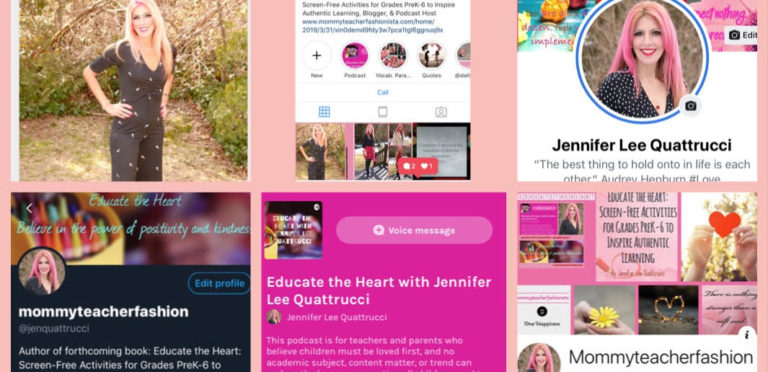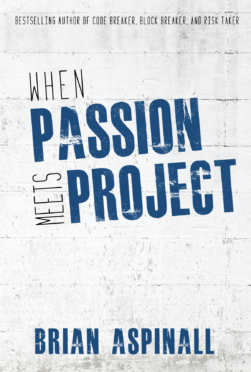First of all, I am humbled to be writing a blog post for the one and only Brian Aspinall. Mr. Aspinall leaves me speechless with his never-ending enthusiasm for creating the best possible environments and experiences for children and educators everywhere. He sets the standard high for all of us and his passion for bettering the world leaves me wanting to do more and to do everything better! He not only motivates me and so many others with his high-energy commitment to quality education, but always makes everything accessible because of his ability to convey his ideas and methods with ease and with a huge dose of pure fun!

Recently, I created a podcast and my first episode went live. It was an introduction to the podcast as a whole, with how and why it came about, and what I’m hoping to accomplish with sharing ideas and opening up conversations about how we, as educators and parents, can work together to provide an environment where children are given time and allowed to focus, to think, to create, and to learn.
In a world where children are rushed from place to place, often on devices, it’s important that we are making the social emotional learning needs of students a priority and ensuring that children are being taught to think critically, collaborate effectively, communicate effectively, and express themselves creatively. I spoke about collaborative group work on my first episode and why I feel it is essential but also addressed the challenges educators face when implementing it in their classrooms. One of the challenges is the noise. It can be loud and for some teachers, that could be hard to handle, and might even make them not want to have the students work together.
“The volume of a classroom should not be an indicator of the quality of the teacher. Loud classrooms are not necessarily managed poorly and quiet ones don’t indicate learning is always happening.”
— Brian Aspinall (@mraspinall) March 23, 2018
Quote from @codebreakerbook https://t.co/o1XpOAdYWD pic.twitter.com/POzlaGgjDK
Quite coincidentally, the next day, Brian @mraspinall on Twitter, posed a “Thought for the Day” on this topic of noise level in a classroom: “The volume of a classroom should not be an indicator of the quality of a teacher. Loud classrooms are not necessarily managed poorly and quiet ones don’t indicate learning is always happening.” To date this tweet has 241 retweets and more than 29 passionate responses. One response, from @ByrneLearning was “Quantity vs. quality. It’s not the amount of volume, rather what is being said within that volume.” I believe this sums it up perfectly.
I am a quiet person. I have a soft voice and have a hard time in noisy environments. My classroom is not silent, and I reinforce the importance of engaging in accountable talk, provide many collaborative group experiences, and students are expected to be able to use educational discourse throughout the day. They are taught from the beginning of the year what their expectations are and the talk is modeled extensively. The quality of talk is sometimes outstanding and sometimes great, and sometimes needs support and more reminders and guidance. It’s a work in progress from the first day of school until the last day of school. Sometimes it’s loud, but it’s never “noise.” I do not consider meaningful discussions among children and educators ‘noise’ regardless of the volume.
I believe there are ways we can, as educators, teach children to communicate in effective, respectful, meaningful ways and achieve quality of the talk needed. I’d like to share a few things I do that have worked for me.
Getting Started
When forming cooperative groups for a particular project it’s helpful assign jobs.
- Leader: Make sure everyone is doing his/her job. Encourage the group members to do their best. Be sure the project is completed.
- Recorder: Do all the writing for your project. Fill out any forms for your group. Help clean up.
- Speaker: Will present the project to the classroom. Must speak to teacher if there are questions or problems the group can’t solve on their own. Help clean up.
- Artist: Draw and color any pictures. Print and cut out any pictures. Help clean up.
- Supply Manager: Gather supplies for group. Make sure supplies are used respectfully. Put supplies away.
Expectations and Group Rules
- Everyone should contribute and take turns to speak.
- All useful ideas should be shared and considered.
- Give reasons for your thinking.
- Disagree with the point, not the person.
- Try to reach agreement. Don’t just agree to disagree.
- Speak in a way so that your group can hear you, but not the entire class.
Discussion Questions for Reflection and Closing
- How good are we at working toward agreement?
- Did everybody contribute equally? Why or why not?
- What can we do better next time?
There are challenges to creating collaborative group opportunities. Children may want to work at different speeds, some students may attempt to take over the group, quiet people may feel uncomfortable, and students may discuss irrelevant topics.
However, the benefits far outweigh the challenges and there are ways to address and overcome each challenge. We owe it to our students to teach them the social skills needed so they can benefit and authentically learn from collaborative group work as they also grow more empathetic as they grow to understand the point of view and feelings of others.
Thank you so much for your time and attention. I hope you found this post worthwhile.
I’d love to connect further so feel free to contact me jenquattrucci@gmail.com or…
Find me on twitter: @jenquattrucci
Instagram: @mommyteacherfashionista
Blog: mommyteacherfashionista.com
Podcast: Educate the Heart with Jennifer Lee Quattrucci on anchor.fm/jennifer-quattrucci
Forthcoming book: Educate the Heart: Screen-Free Activities for Grades preK-6 to Inspire Authentic Learning (available in September with Rowman & Littlefield)
Facebook: Jennifer Lee Quattrucci
LinkedIn: Jennifer Lee Quattrucci
Best,
Jennifer

 For all the kids who grow up in a small town and think they don’t stand a chance. You do. I was once that kid.
For all the kids who grow up in a small town and think they don’t stand a chance. You do. I was once that kid.